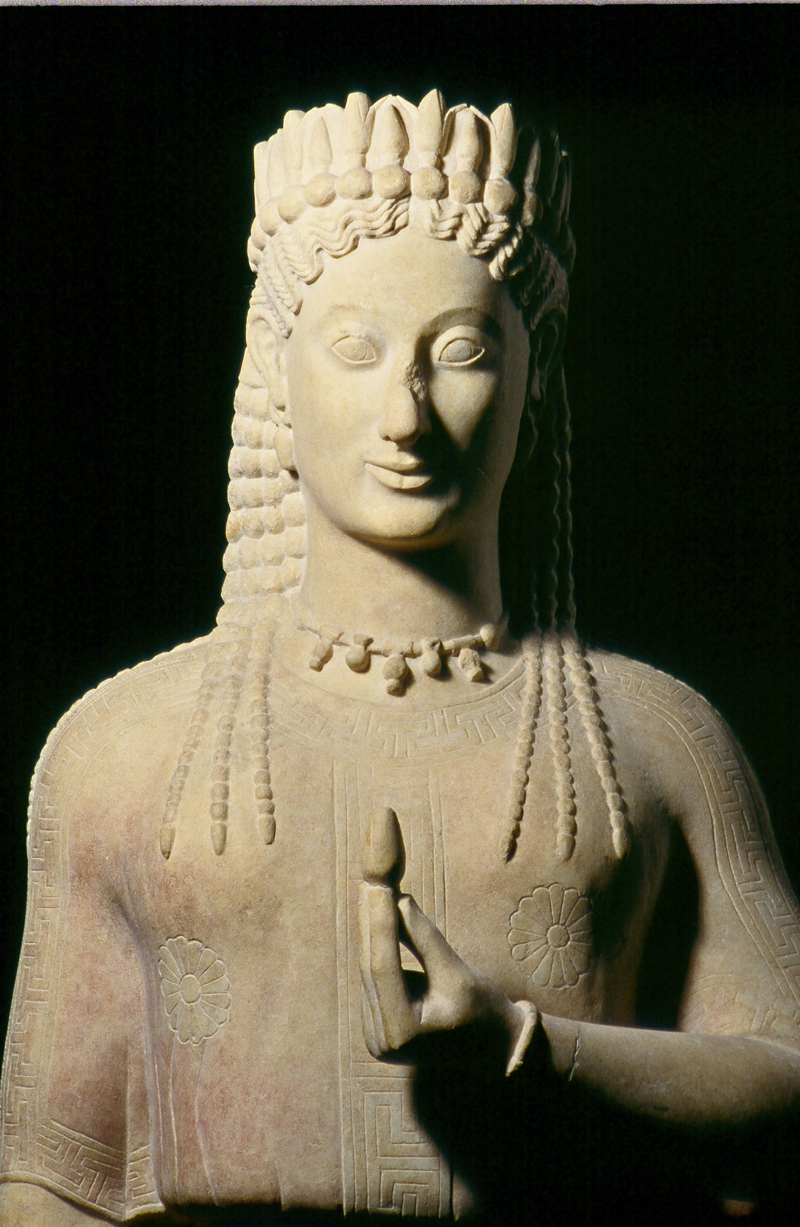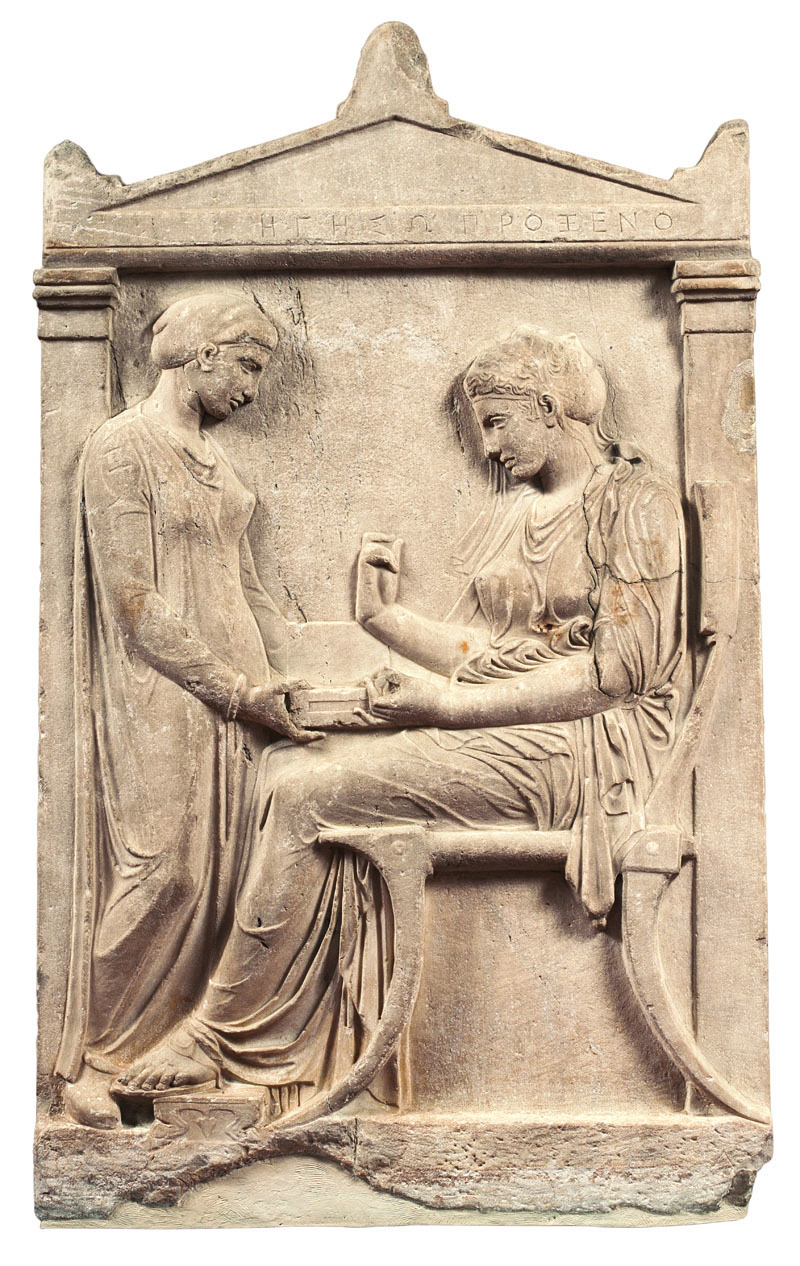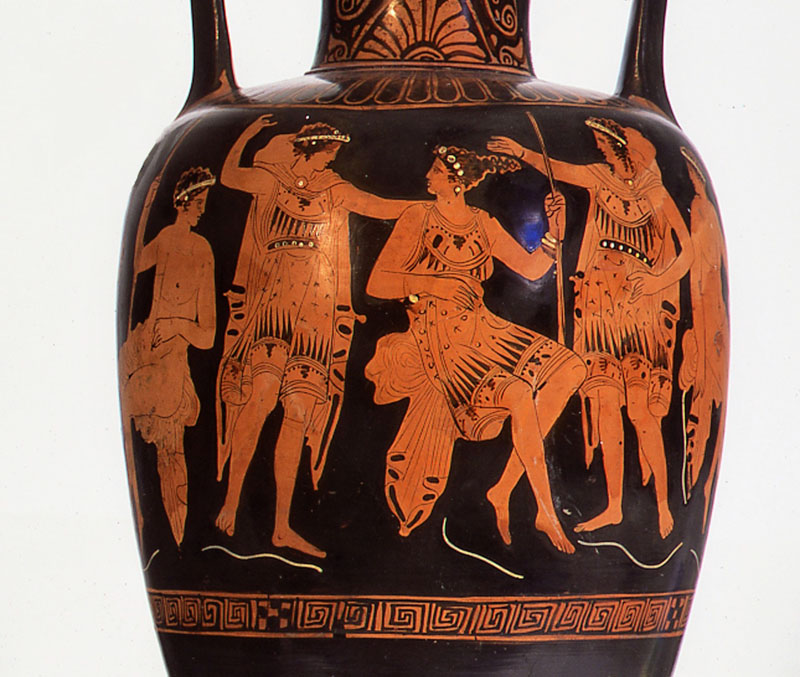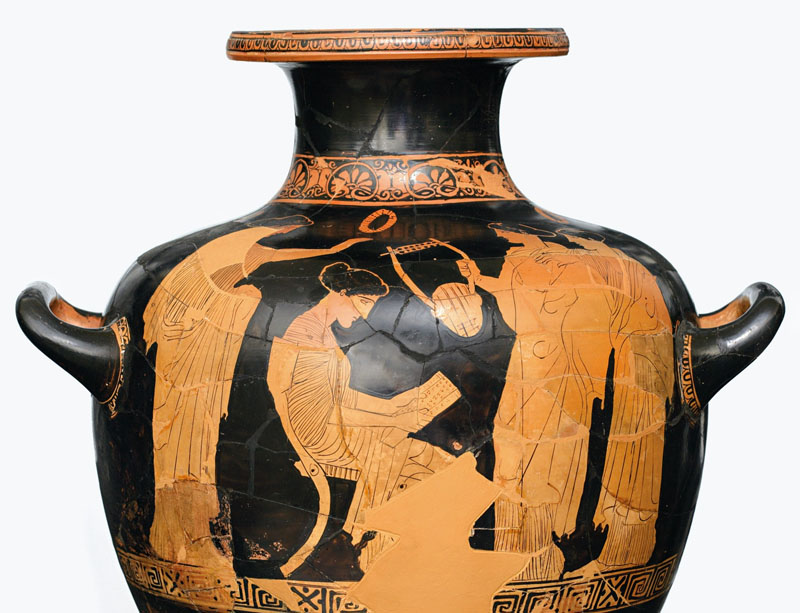Female figures that the visitor sees in marble sculptures, colorful murals and elaborate vases, tell their own unique story
Archetypal women, naked and abstract, with buttocks and breasts accentuated. Enigmatic and Sibylline women with impressive rich hairstyles, colorful necklaces and fancy clothes. Women divine and venerable, women mortal, mythical and heroic. Famous women, priestesses, scholars, poets, philosophers, athletes and queens. Simple and everyday women, with names and dreams… There are countless female figures that the visitor to the National Archaeological Museum sees in marble sculptures, colorful murals, elaborate vases, various materials, shapes and colors, which change in the flow of time and tell their own unique story”. With these words, Maria Lagogianni, honorary director of the National Archaeological Museum (EAM), introduces the APE-MPE in a mental tour with… the scent of a woman.
Enigmatic figurines
So, on the occasion of International Women’s Day, celebrated every year on March 8, where would a short visit to one of the world’s most important museums begin? “From our very distant past, as presented in room 5 of the permanent exhibition”, answers the APE-MPE interlocutor. And he explains: “Here he could admire the findings from the Neolithic settlements of Thessaly (Dimini and Sesklo) and observe the most ancient archetypal female figures. Gifted with original talent, the artists who were active in the Neolithic settlements of Greece (6500-3300 BC) managed to speak suggestively about the woman by creating numerous and varied female clay figurines, naked and fleshy with the buttocks and breasts emphasized. Enigmatic as a whole and difficult to understand for the modern viewer, the Neolithic female figurines are considered to express deeper proto-religious needs and probably served fertility rituals associated with the prevailing at that time the cult of the mother deity.
The continuation belongs to the Cycladic culture. What do (not) the female statues belonging to the largest and most important collection of Cycladic figurines in the world reveal to us? “Later and for almost a millennium (3200-2300 BC) marble figurines, in various shapes and sizes, were manufactured in the Cyclades of the Aegean. In room 6 we have the opportunity to observe many of them. Most depict full-length female figures, naked, with arms bent and folded under the chest and the soles of the feet sculpted obliquely. Simple and unnecessary, Cycladic female figurines testify to a sense of balance and purity. Don’t look for their social footprint though. They were found mainly in tombs and, despite the various interpretations, they continue to remain silent and sibyllic without revealing their deeper content and special meaning”, underlines M. Lagogianni to APE-MPE.
Impressive Mycenaeans
The next stop on our tour concerns a brilliant civilization of Greek prehistory, the Mycenaean. “In room 4, where the panorama of the Mycenaean civilization (1600-1100 BC) is presented, the most impressive women of Greek prehistory await us. Goddesses or mortals, Mycenaean women are usually depicted with rich hairstyles, colorful jewelry and fancy multi-pleated dresses that form a tight bodice emphasizing the plump breasts. Many times their rich breasts are depicted naked in order to particularly emphasize femininity, fertility and motherhood”, emphasizes M. Lagogianni, referring to perhaps the most famous female form of the period.
“A stop at showcase 20 will allow you to admire the famous fresco of the so-called ” Mycenaeia” which comes from the Religious Center of Mycenae and dates back to the 13th century. e.g. Note the elaborate headdress tied with fabric ribbons, see the elegant short waistcoat, the colorful necklaces. Note the eyes, well-shaped eyebrows, and red lips that seem to tingle with pleasure, perhaps because she has been offered the necklace she holds in her right hand. Goddess or priestess, the Mycenae of the National Archaeological Museum undoubtedly expresses a female role model of her time, an ideal of beauty and feminine elegance that seems to dominate for many centuries later,” emphasizes the honorary director.
From Nikandri to Frasiklia
Archaic times also bring monumental sculpture. “The archetypal way of rendering the female figure will be followed by the monumental sculpture of the Archaic times (700-500 BC), as expressed with the naked Kouros and the elegantly dressed Kores”, points out the APE-MPE interlocutor, choosing to present a statue in which both the deity it depicts and the person who dedicated it are female.
“A typical example is the marble female statue that welcomes the visitor to room 7 of the National Archaeological Museum. The statue, which probably depicts the goddess Artemis, was dedicated to her sanctuary in Delos and dates back to around 660 BC. The testator was a prominent woman from Naxos, Nikandri. The three-line inscription in finger hexameter inscribed on the left side of her lower torso reveals the social position of the woman who declares herself great and proud of what she has achieved in her life: “The Nikandris dedicated me to the apt archer, the daughter of Deinodicaios from Naxos, the greatest among the others, sister of Deinomedes and now wife of Phraxos. Another woman with a different personality and history stands in room 11.
The marble statue, which dates to around 550-540 BC, was erected in the ancient municipality of Myrrinountos, Attica (Merenda), as a marker at the grave of a young woman. In the epigram engraved on the front of the pedestal we read the name of the deceased and her story. Frasikleia, who left early, falls silent with a smile on her face, as the inscription reveals to us: “I shall be called daughter forever, since the gods have given me this name instead of marriage.”
“He wears a brilliant purple garment, decorated with incised rosettes, petals, stars, meanders and bands in black and yellow. Her luxuriant hair forms tentacles that fall over her shoulders and back. The whole image is completed by the rich jewelry, bracelets, earrings and necklace, as well as the impressive tiara of the head, decorated with flowers and lotus buds.
From Igesso to Bereniki
Similarly sad is the story of the woman who awaits us in room 18. M. Lagogianni describes: “The marble tombstone that comes from the cemetery of Kerameikos and dates back to around 410-400 BC. bears the name of the dead Athena engraved on the cornice of the pediment.
THE I lead, the Consul’s daughter, is depicted in the relief inside the house. She is seated in a sumptuous recline, her feet resting on an ornate footstool. She wears a thin tunic and robe that sensually reveal the shapely lines of her beautiful body. Her well-groomed hair is tied in a scarf at the nape of her neck. In front of her stands her faithful therapist (“anonymous” and dressed in a “barbaric” tunic) offering with her hands an open jewelry case. Hegisous’ gaze turns to the once-painted jewel she was holding with the fingers of her right hand. The young woman appears to be adorning herself—perhaps for a wedding canceled by her untimely death.”
The next exhibit gives the opportunity for another charming story from the APE-MPE interlocutor: “A different female model decorated with a seductive story offers an ivory ring that comes from Alexandria, Egypt. It dates back to the end of the 3rd century. e.g. and is exhibited in room 40 (showcase 22). On the sling she is depicted as a bust wearing the fringed veil of Isis the Berenice IIthe wife of Ptolemy III Euergetes.
In a poem dedicated to her by her contemporary Callimachus, it is mentioned that Berenice dedicated a plume of her hair to the temple of Arsinoe-Aphrodite to thank the gods when her husband returned safely from a campaign. The next day, however, Berenice’s plume disappeared. Then Conon Samios, the Ptolemaic court astronomer, announced that he had discerned between Ursa Major and Virgo a new constellation. It was the plume or Count of Berenice that the goddess Aphrodite fixed in the sky…”.
Heroic and learned women
The next stop is the Vase Collection, displayed on the first floor of the National Archaeological Museum. There, M. Lagogianni will choose a different female role model: “In room 56 (display case 124) [Εικ.4] an Attic red-figure amphora (By Zografou Meleagros) dating from around 400-380 BC is on display. In the written representation in the center of the main face, the figure of a woman holding a spear dominates between four male figures.
It’s about her Atalanti, the mythical heroine who participated in the hunt for the Calydonian Boar and the adventure of the Argonautic expedition. Correspondences of the mythic model of the heroic woman are certainly documented in various variations throughout historical times. As an example, I remind you of Telesilla, the lyric poet who lived in Argos during the first half of the 5th century. e.g. In 494 BC when Cleomenes the Lacedaemonian attempted to capture Argos, it was she who armed the women of Argos to save their city. The sensational feat is narrated by the traveler Pausanias (2.20.8-10), who during his visit to Argos in the 2nd c. A.D. established the existence of an honorary stele with a relief representation of Telesilla at the moment when she is about to put on the war helmet and while she has scattered the books at her feet”.
A red-faced hydria (of the Group of the Polygnostic), projecting the model of the wise woman, closes our short tour. “It comes from Vari in Attica and dates back to around 440-430 BC. (hall 55, showcase 117) [Εικ.5]. In the representation of the main view, the Sappho, the great lyric poet of the 6th c. e.g.
Sitting in a crouch, she reads a poem from the scroll she holds in her hands. Three schoolgirls are depicted around her. Callis offers her the lyre and Nicopolis crowns her. Written tradition states that Plato called Sappho wise and had added her to the group of nine muses as a tenth muse. This apotheosis is also visualized in the Attic hydria of the National Archaeological Museum with the addition of the lyre and the coronation of the great poetess”, points out M. Lagogianni. And he concludes as to the message of the ancient performance:
“It is clear and perhaps timely on the occasion of International Women’s Day: knowledge, education and culture can dissolve stereotypes and social constructions, defeat prejudices and offer everyone equal opportunities. These stereotypes were combated by entire generations of great women, poets such as Corinna of Tanagra who allegedly defeated Pindar in five poetic contests, athletes such as Cynisca and Euryleonis of Sparta who won in the Olympic games, philosophers such as Themistocleia, the priestess of Delphi who taught Pythagoras, mathematicians and astronomers, such as Hypatia of Alexandria who passionately supported her choices and was killed by a crowd of fanatical intolerants in the first days of March 415 AD.
Source :Skai
I am Frederick Tuttle, who works in 247 News Agency as an author and mostly cover entertainment news. I have worked in this industry for 10 years and have gained a lot of experience. I am a very hard worker and always strive to get the best out of my work. I am also very passionate about my work and always try to keep up with the latest news and trends.














